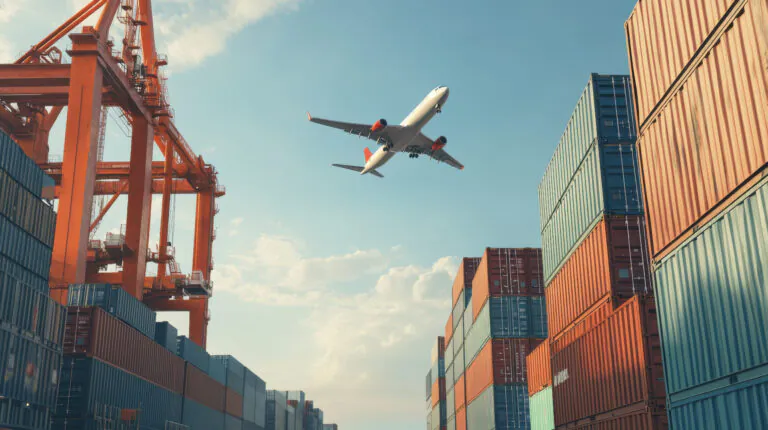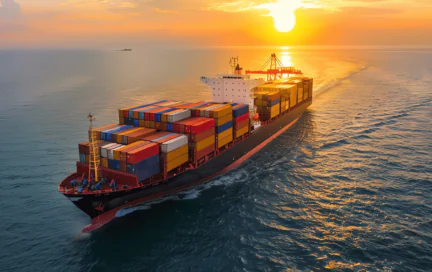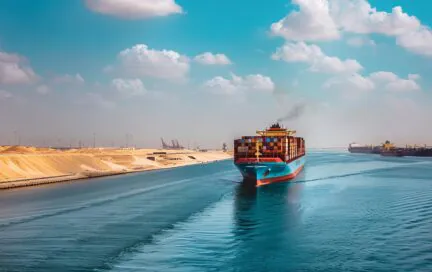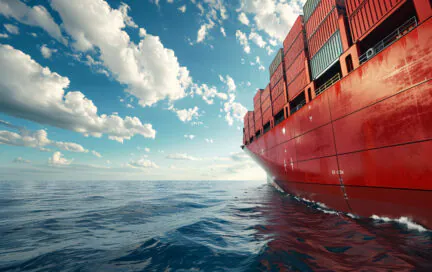Die Situation im Roten Meer ist zwar einzigartig, erinnert jedoch an die Lehren aus früheren Störungen in der Lieferkette, wie der Blockade des Suezkanals. In Anlehnung an Jochen Fresses Einblicke zu den prognostizierten Kapazitäts- und Ausrüstungsherausforderungen, die sich aus der Rotmeer-Schifffahrtskrise ergeben, spricht Christopher Braun, Leiter der Luftfracht bei Forto, darüber, wie multimodale See-/Luft-Dienste eine strategische Antwort auf die aktuellen Störungen sein können.
Das Beste aus beiden Welten – Geschwindigkeit und Zuverlässigkeit
See-/Luft-Transport, auch als multimodaler Transport bekannt, ist eine strategische Logistiklösung, die die Kosteneffizienz der Seefracht mit der Geschwindigkeit der Luftfracht kombiniert. Traditionell ist dieser Transportmodus besonders vorteilhaft für zeitkritische Sendungen, bei denen Seefracht zu langsam und reine Luftfracht zu teuer ist. Indem Waren zunächst per Schiff zu einem Transitpunkt transportiert und dann auf Luftfracht umgestellt werden, bieten See-/Luft-Lösungen einen ausgewogenen Ansatz in Bezug auf Kosten, Geschwindigkeit und Umweltauswirkungen. Mehr noch: In Krisenzeiten kann multimodaler Transport eine rechtzeitige Antwort auf Engpässe in der Lieferkette sein.
Umschwenken in Krisenzeiten
Die durch die aktuelle Rotmeer-Schifffahrtskrise bedingten Herausforderungen in der Lieferkette erfordern eine strategische Antwort, die multimodale See-/Luft-Dienste einzigartig bieten können. Die Kombination aus Effizienz und Geschwindigkeit, gepaart mit alternativen Routen, die die Rotmeerregion umgehen, kann Unternehmen dabei helfen, die Lieferung von Waren zu sichern, ohne die hohen Kosten der direkten Luftfracht oder die Unsicherheiten der Seefracht in Kauf nehmen zu müssen. Dieses Gleichgewicht ist entscheidend, um die Flüssigkeit der Lieferkette zu erhalten und Marktnachfragen effektiv zu erfüllen.
Die langfristige strategische Verschiebung
Langfristig schlägt ein offenerer Ansatz für multimodale See-/Luft-Dienste einen adaptiven Wandel in der Logistikstrategie vor, bei dem Flexibilität und Reaktionsfähigkeit im Mittelpunkt stehen. In einer Umgebung, in der schnelle Anpassung an sich verändernde Szenarien entscheidend ist, zeichnen sich diese Dienste durch ihre Fähigkeit aus, zuverlässige und flexible Transportlösungen anzubieten. Sie unterstreichen die Bedeutung anpassungsfähiger Logistikpraktiken, um komplexe und wiederkehrende Herausforderungen im globalen Handel zu bewältigen.
See-/Luft-Dienste von Asien nach Europa
Fortos See-/Luft-Dienste aus China, Vietnam und dem indischen Subkontinent, einschließlich Standorten wie Pakistan, Bangladesch und Sri Lanka, bedienen nahezu alle großen europäischen Flughäfen mit einer ungefähren Transitzeit von 16–22 Tagen von Hafen zu Tür. Unser Service bietet wöchentliche Abfahrten und bietet durch die Routenführung über Chennai eine deutlich schnellere Alternative zu traditionellen See-/Luft-Lösungen, die über Dubai verlaufen.
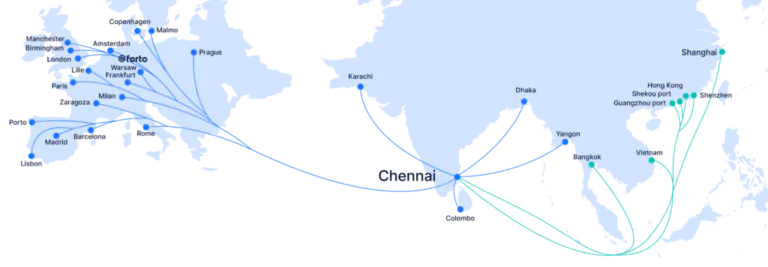
Eine zeitkritische Gelegenheit
Da die Rotmeer-Schifffahrtsrouten durch einen anhaltenden Konflikt ohne absehbares Ende beeinträchtigt sind, bieten diese Dienste eine Alternative zur Seefracht. Allerdings wirken sich Störungen in einem Transportmodus oft auf andere aus, was darauf hindeutet, dass sich mit der Verlängerung der Rotmeer-Situation Kapazitätsprobleme und Preiserhöhungen, wie wir sie bei den Seefrachtdiensten beobachten, auch auf die Luftfracht auswirken könnten. Dies unterstreicht die Dringlichkeit für Verlader, jetzt multimodale Optionen in Betracht zu ziehen, um die Flüssigkeit der Lieferkette aufrechtzuerhalten.
Der Forto-Vorteil
Mit Forto zu arbeiten bedeutet, mit einem innovativen, digital fortschrittlichen Spediteur zusammenzuarbeiten. Unsere multimodalen Dienste sind auf die dynamischen Anforderungen der heutigen komplexen Versandumgebung zugeschnitten und gewährleisten Agilität, Zuverlässigkeit sowie einen strategischen und nachhaltigen Ansatz in der Logistik.
Für weitere Informationen darüber, wie Sie Ihre Logistikstrategie mit den multimodalen Lösungen von Forto optimieren können, kontaktieren Sie uns.
